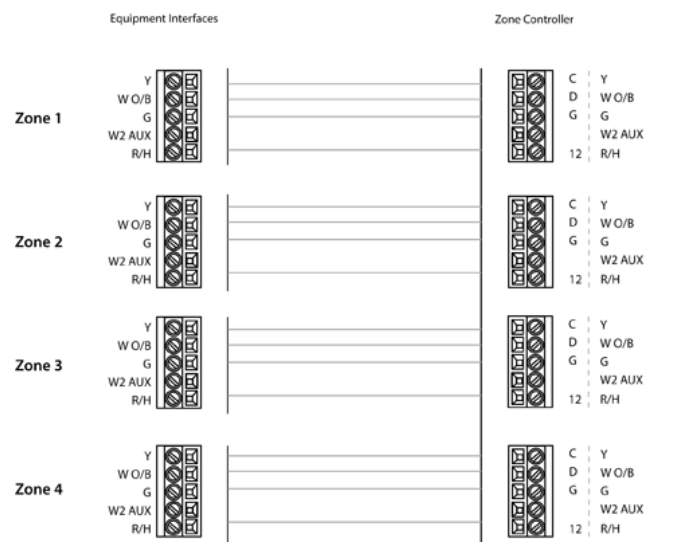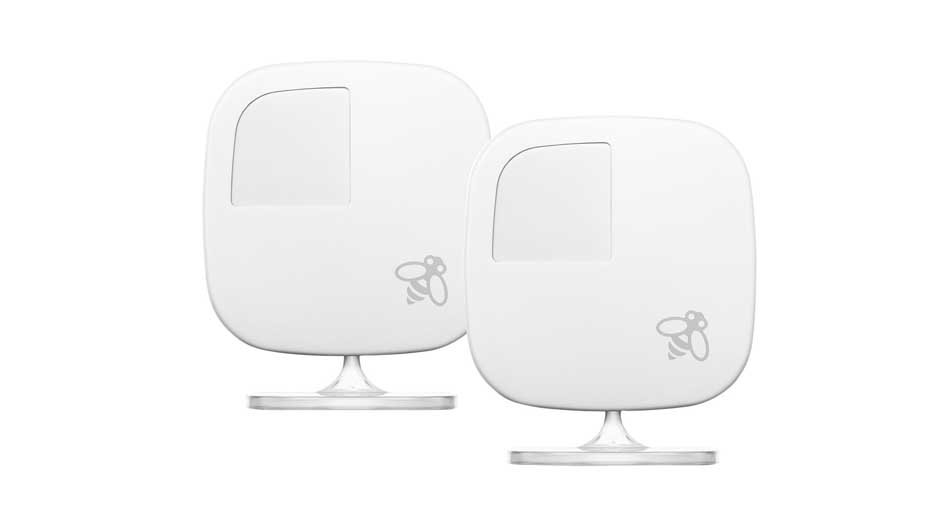Using Ecobee Remote Sensors to Implement Multiple Zones
Using a good smart thermostat will not only make your home more comfortable but also help you lower your expenditures. The only problem is a single thermostat will rarely be enough to keep a big house’s temperature in check from its lone installation in the hallway or in the living room. The solution would be using multiple thermostats to implement zonal temperature control.
But again, this is expensive and cumbersome. With Ecobee remote sensors, you don’t have to worry about purchasing multiple thermostats. These small devices can be easily placed inside any room and they will relay the temperature readings to the Ecobee thermostat. The thermostat will then determine whether to turn on the heating or cooling depending on your set temperature. This will give you tighter control over the temperature, especially in big homes.
What is the Ecobee Remote Sensor?
The Ecobee 3 and Ecobee 4 remote sensors are simply extended temperature sensors –the kind you will find on a regular thermostat. The only difference is this one communicates with the central thermostat wirelessly using your Wi-Fi connection, meaning that you won’t have to run cables when integrating it.
When you purchase the new Ecobee 4 thermostat, you will be provided with one sensor. However, you can buy more online if you wish to control temperatures in different rooms automatically. Ecobee 3 and Ecobee 4 thermostats are capable of controlling up to 32 multiple zones remote sensors accurately. This enables you to set temperatures in big rooms or apartment units without any hassles using just one smart thermostat.
How Does the Ecobee Multiple Zones Remote Sensor Work?
The Ecobee wireless remote sensor not only measures the temperatures but also detects whether a room is occupied or not. This room occupancy detection feature is useful in saving energy since it enables the thermostat to only heat rooms that have people and avoid heating those without occupants. This powerful energy saving feature is what makes Ecobee one of the best smart thermostats in the market.
These room sensors use motion to detect when you are home, therefore, expect a cold room to start heating instantly the moment you walk in. When you leave the house, these sensors will activate the away mode and turn off heating in the previously occupied rooms. These sensors don’t limit how you use the thermostat, meaning that you can still set an even temperature manually for all rooms, whether occupied or not.
Features
The most notable features of the Ecobee 3 and Ecobee 4 remote wireless sensor include:
- Smart in and away reporting that enables the thermostat to adjust depending on the occupancy of the home and regardless of the 7-day programming settings
- A follow me feature that turns down the conditioning in rooms you aren’t using and keep you comfortable wherever you go.
- A thermal protect feature that warns about radical sensor readings and lets you fix erratic sensors without harming your HVAC
- Integrated mobile access that lets you view all the sensors via your Ecobee mobile app or web portal
- The pet detect feature that differentiates between you and your pet hence avoiding false triggers
Installation Setup and Accuracy
The Ecobee remote sensor is a simple plug and play device. First, you will get a long life remote sensor battery that could keep pushing for years and notify you when it runs low. Since the sensor uses a low range frequency at 915MHz, you won’t have to worry about swapping the battery for a while.
To activate the remote sensor, pull out the plastic strip at the back of the sensor to allow contact with the battery. Give your ecobee3 or Ecobee4 smart thermostat a few seconds to detect the remote sensor. Once it has discovered the sensors, it will give you a prompt to pair it up.
Select a name for the sensor or enter a special name and follow the on-screen cues to finish the pairing. Afterward, place the sensor where you want it to monitor the temperature. You can then pair your thermostat with the Ecobee app for Android or iOS for better remote control.
Your ecobee remote sensors should be:
- Mounted or placed 5ft off the ground for ideal room temperature reading
- Positioned in a place that gives it a clear view of the room. The area of your choice shouldn’t have anything blocking the sensor since it may compromise with its ability to detect room occupancy.
- Place it in an open area for it to measure the room temperatures better
- Keep the remote sensor within range of the Ecobee3 or Ecobee4 thermostat. This should be no more than 45ft from the smart thermostat.
- The bee should always face upwards and towards your right
Failure to adhere to these simple guidelines will result in some of the most common remote sensor related problems. Obscuring the sensor, for instance, will reduce its accuracy and ability to detect motion. Installing it too far away from your thermostat means the sensor won’t communicate well or will keep on losing connection.
Remember that these multiple zone sensors can only work when you have registered your Ecobee thermostat on their official website.
How Ecobee Zonal Control Works
The Ecoboee is an excellent multi-zone thermostat. However, for the thermostat to work, your HVAC system must have some form of multi-zone control feature in place. Some of the most common designs use:
- A zone controller that can control temperatures at different zones through a single HVAC system
- A collection of zone and bypass dampers configured to control air flow in your HVAC’s ductwork
- A system running different thermostats for each zone
The Ecobee thermostat can control such zoned systems. If you already have zone thermostats, you can use it to replace them regardless of whether they are master or slave thermostats.
Hooking up your Ecobee to a zoned system isn’t as easy as connecting it to a single zone thermostat. It is advisable that you hire a professional to handle the connections.
The common connections for each zone give you R, G, Y/Y1, and W/W1 connections. If your system runs multi-stage cooling/heating or a heat pump you might have W2, Y2, and O/B terminals too.
Check this too: How does ecobee power extender kit work
If your system doesn’t support this or you just want a simple way to heat remote rooms like the bathroom or attic, you can consider the more straightforward of installing an electric wall heater or a kerosene heater for indoor use.
Your Ecobee is different in that it can remotely access each of these zones and control their temperatures according to the settings you enter on the thermostat or on the web portal. This coupled with a neat grouping feature lets you change the temperature at one point and have it propagate across the group.
Here’s an example of a generic diagram showing your connections between the thermostat and your Zone Control board.

Conclusion
The Ecobee remote sensors are a must-have for anyone who has the Ecobee 3 or Ecobee 4 thermostat. If you don’t have one, check it out here. With these Ecobee remote sensors, you have the ability to remotely control the room temperatures of individual rooms. They will also enable the thermostat to conserve energy effectively in rooms without occupants. In addition, you can pair your Ecobee thermostat with Apple HomeKit and with the sensors installed, you can control temperatures in any room using voice commands.

This doesn’t seem to explain how multiple zones are controlled with a single set of wiring, as the remote sensors have no connection. How does the ecobee discern which zone it is controlling at any time when the same wiring would be going to each zone on the zone controller. Is there a breakout box for wiring that I’m missing somewhere?
My question exactly. How does the Ecobee tell the HVAC which zone to activate? How do you associate various HVAC zones to specific Ecobee sensors?